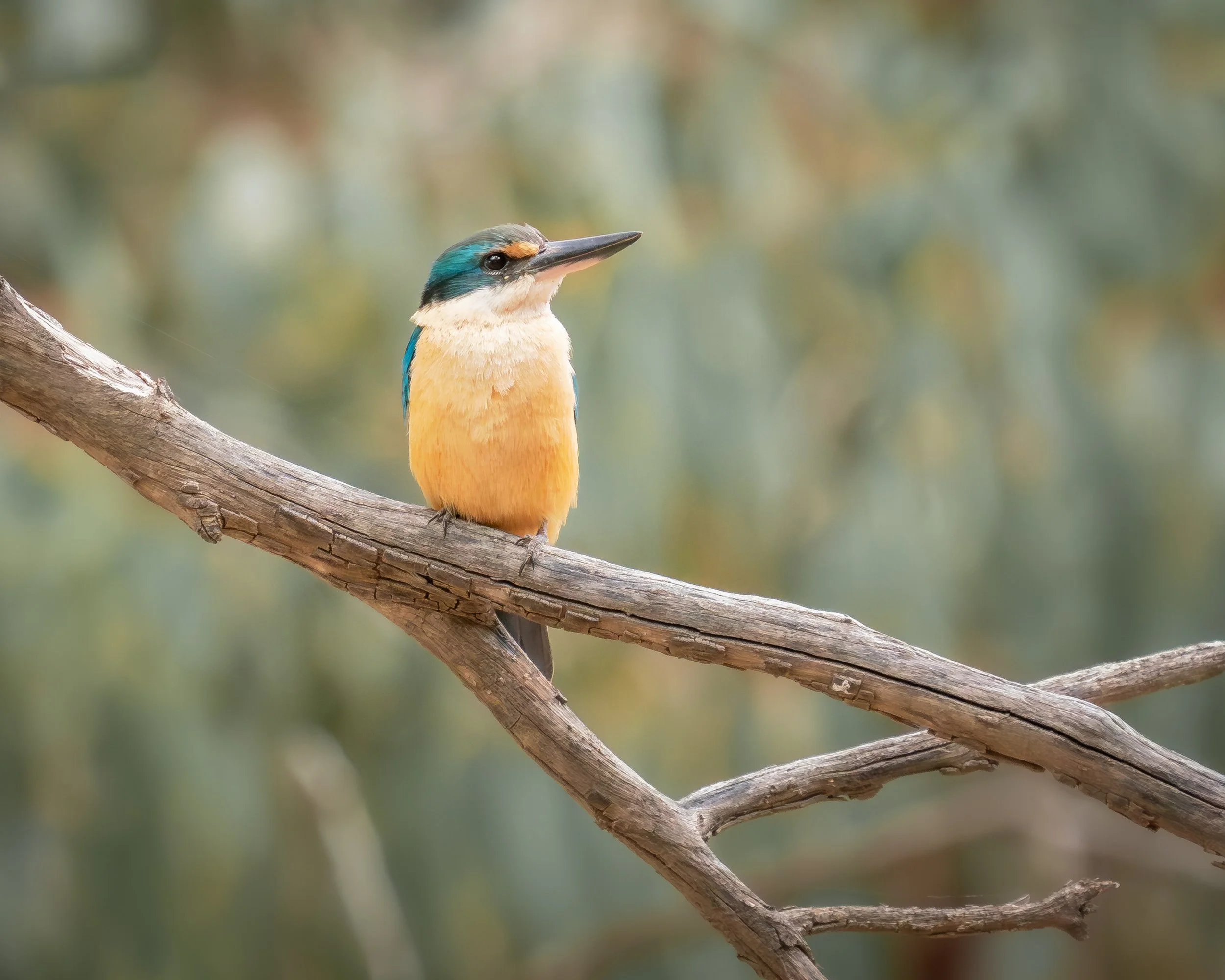
The stunning Flinders Rangers
Home to some of Australia’s amazing wildlife.
Spring is an amazing time of year to experience the Flinders Ranges. The landscape is still touched with the verdant hues of recent rains, which help to keep the dust at bay and the flies to a minimum. This week, we ventured to Quorn, located in the Southern Flinders Ranges, with a specific mission in mind: to find the elusive and beautiful Sacred Kingfisher.
Known for its striking blue and green feathers, the Sacred Kingfisher migrates to this region during the warmer months. However, spotting this bird is no easy task. It often perches high in trees and swiftly darts along creek beds in search of insects and small reptiles. Patience and keen observation are key to catching a glimpse of this magnificent bird in its natural habitat.
Exploring Quorn and the surrounding areas provided not only the excitement of capturing wildlife images but also the serene beauty of the Flinders Ranges in spring. The gentle rain adds a fresh scent to the air, and the vibrant flora creates a stunning backdrop for any nature enthusiast. Each moment in this breathtaking landscape brings a new discovery, from the smallest insect to the grandest vistas.
Whether you're a passionate wildlife photographer or a casual nature lover, the Flinders Ranges in spring offers a unique opportunity to connect with Australia's wild beauty. Keep your eyes peeled and your camera ready; you never know what incredible sights you might capture.
Kingfishers in Quorn, South Australia.
It was an incredible two days located slightly north of Quorn in the southern Flinders Rangers. After several hours of searching the area, we continued along the Mount Arden creek in an attempt to hear the call of a kingfisher. We were eventually alerted to the beautiful call and sighted a male and female perched in a tree located in a dry creek bed area that was surrounded by large Gum Trees. We were fortunate to observe their behavior and capture some beautiful images of these stunning little character. They moved from tree to tree and out onto the plains, where they also positioned in low lying shrubs and bushes looking for food.
Appearance/ Habitat
The sacred kingfisher is mostly blue-green to turquoise above with white underparts and collar feathers, a black mask and buff lores. Both sexes are similar, but females are usually greener, duller and less buff beneath, and juveniles have buff or mottled brown edges on the collar, underparts and upper-wing coverts. An adult comes in at around 20–23 cm in size.
The Sacred Kingfisher inhabits woodlands, mangroves and paperbark forests, tall open eucalypt forest and melaleuca forest.
Diet of the Kingfisher in most Australian regions.
The sacred kingfisher feeds on a variety of insects bugs and spiders, small crustaceans, fish (infrequently), frogs, small rodents and reptiles. Usually, the sacred kingfisher will sit on a low branch and wait for prey to pass by.
Accomodation in the area.
Thank you to the lovely folks at the Flinders Rangers Motel located on Railway Terrace in Quorn. They have very nice clean rooms, with comfy beds. I highly recommend the motel if you are traveling through the area.





